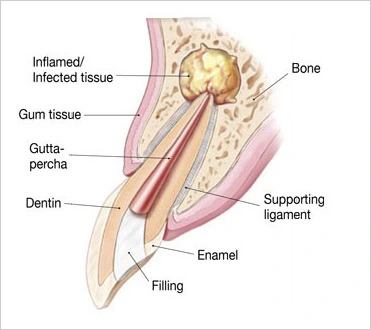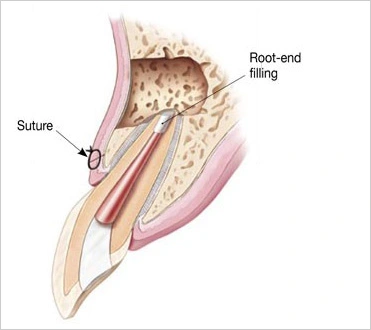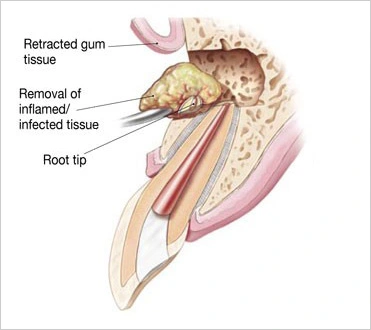
On occasion, a nonsurgical root canal procedure is not enough to save a tooth and a surgical approach is recommended. A surgery, or apicoectomy, is usually performed on a tooth that has had a previous root canal that has failed. A persistent infection is one of the few reasons an apicoectomy is performed.

In an apicoectomy procedure, an incision is made across the gums to expose the underlying bone. The bone is then removed to open a window to the apex, or end of the tooth.
The tip of the root is then removed, along with any inflamed or infected tissue. After all the infection has been removed, the end of the root is prepared for a filling.

A filling is then placed at the end of the root to prevent any bacteria from reentering the tooth. A few dissolvable stitches are then placed to help the tissue heal.
Over a period of months, the bone heals around the end of the root. Local anesthetics make the procedure comfortable, and most patients return to their normal activities the next day. Postsurgical discomfort is generally mild.